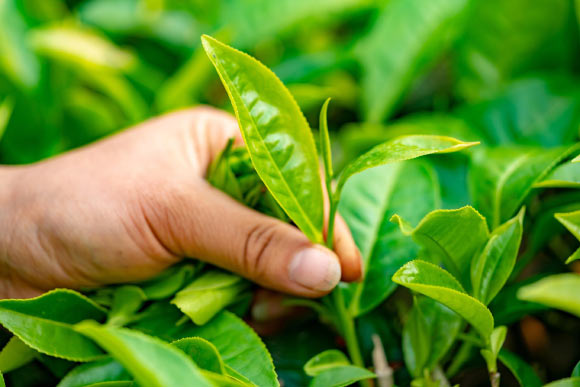Tea plant (Camellia sinensis) is among the most significant beverage crops globally. The size of tea buds not only directly affects the yield and quality of fresh leaves, but also plays a key role in determining the suitability of different types of tea. In new research, scientists from Tea Research Institute at the Chinese Academy of Agricultural Sciences collected images of the apical buds at the one bud and two leaves stage from 280 representative tea accessions; their genetic diversity analysis indicated that the length, width, perimeter, and area of tea buds all displayed a normal distribution; comparative transcriptomic analysis of extreme materials revealed a significant negative correlation between the expression levels of four KNOX genes and tea bud size; further analysis suggested that CsKNOX6 may be a key gene negatively regulating tea bud size.
Tea plant is one of the most important beverage crops in the world, cultivated in over 60 countries and regions worldwide, with over 2 billion people drinking tea globally.
In high-quality tea production, leaves are typically harvested according to standards such as one bud, one bud with one leaf, and one bud with two leaves.
The size of tea buds not only directly affects the yield and quality of fresh leaves but is also closely related to the suitability of the tea for processing.
Different types of tea have varying shapes and different requirements for bud and leaf size.
For a long time, research on the molecular mechanisms regulating the size of tea buds and leaves has been very limited, severely restricting genetic improvement efforts for this trait.
Analyzing the genetic regulatory mechanisms of tea bud size has potential significance for improving tea plant cultivars and increasing tea yields.
In new research, Dr. Jiedan Chen and colleagues quantified bud length, width, perimeter, and area across 280 diverse tea accessions.
These traits displayed continuous variation and high heritability, indicating strong genetic control.
Comparative transcriptome analysis of extreme bud-size accessions revealed four candidate Class I KNOX transcription factors with significantly higher expression in small-bud varieties.
Among these, genome-wide association mapping highlighted CsKNOX6 as the most likely key regulatory gene.
CsKNOX6 is located on chromosome 10, and its sequence suggests nuclear localization, consistent with transcriptional regulatory activity.
To validate its function, the researchers overexpressed the CsKNOX6 gene in the model plant Arabidopsis thaliana.
Transgenic plants displayed abnormal shoot development and markedly smaller leaves, with leaf area reduced to as little as 13% of wild-type levels.
This functional evidence supports the conclusion that CsKNOX6 acts as a negative regulator of bud and leaf size.
“Bud size is a critical trait for both agronomic productivity and market quality in tea,” the scientists said.
“Identifying CsKNOX6 provides a direct genetic target for selective breeding, including marker-assisted improvement.”
“While functional testing in Arabidopsis provides strong support, future gene-editing or transgenic validation in tea plants will be essential to confirm regulatory mechanisms in perennial woody species.”
“This discovery lays the groundwork for precision breeding strategies to improve yield, uniformity, and suitability of tea cultivars.”
“The identification of CsKNOX6 offers new opportunities for developing tea varieties with optimized bud size for different production goals, such as premium hand-plucked teas or high-yield mechanical harvesting.”
“The gene can be integrated into molecular breeding programs through SNP marker selection or gene-editing approaches to fine-tune developmental growth.”
A paper describing the findings was published in the journal Horticulture Research.
_____
Shuran Zhang et al. 2025. Integration of digital phenotyping, GWAS, and transcriptomic analysis revealed a key gene for bud size in tea plant (Camellia sinensis). Horticulture Research 12 (6): uhaf051; doi: 10.1093/hr/uhaf051








